

Sacsayhuaman 10000 b.c. Dyar site. The Dyar Site (9GE5) is an archaeological site located in Greene County, Georgia, in the north central Piedmont physiographical region.[1] The site covers an area of 2.5 hectares.[2] It was inhabited almost continuously from 1100 to 1600 by a local variation of the Mississippian culture known as the South Appalachian Mississippian culture.
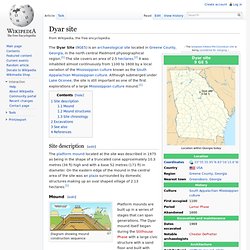
Although submerged under Lake Oconee, the site is still important as one of the first explorations of a large Mississippian culture mound.[1] Site description[edit] The platform mound located at the site was described in 1975 as being in the shape of a truncated cone approximately 10.3 metres (34 ft) high and with a base 52 metres (171 ft) in diameter. 10 zones for the Veracruz archaeological ancient >> Historia - Veracruz de Ignacio de la Llave. Antecedentes Prehispánicos En la época prehispánica surgieron tres culturas fundamentales: la Olmeca, la Huasteca y la Totonaca.

En el curso de los dos siglos anteriores al arribo de los españoles, se produjo una fuerte influencia náhuatl, que se consolidó y tendió a ser dominante a partir de la conquista azteca, consumada en el siglo XV. Se conservan testimonios de estas culturas en los centros arqueológicos de Pánuco, Castillo de Teayo, El Zapotal, Las Higueras, Quiahuiztlán , El Tajín, Cempoala, Tres Zapotes, San Lorenzo Tenochtitlán y otras de gran importancia. Se desconoce el origen de los Olmecas, los antropólogos han planteado diversas hipótesis al respecto; una de ellas dice que probablemente, hace 3500 años, una inmigración con rasgos negroides llegó a Champotón, Campeche y que de ahí viajó por la costa, hasta llegar al río Coatzacoalcos, mezclándose con un grupo ya establecido en esa zona. Olmecs: Mesoamerican Civilization.
Olmecs: Mesoamerican CivilizationsLast Updated 11/6/2007 11/5/2007 11/4/2007 11/3/2007.

The Olmecs: A Mesoamerican Wonder. The Olmecs: A Mesoamerican Wonder Kimberly Lavin ã December 1, 1999 RS 350: Independent Study Fr.

Thomas Hart Fall 1999. Will the Real Atlantis Please Stand up?: Viewzone. The Eastern Hemisphere was called Tala or Talan, (The Upper World).

The Western hemisphere was Atala or Atalan (The Lower World). Tala meant "above the surface. " Atala meant "on, by, near, or below the surface. " The English word Atoll, a low island at nearly sea level, derives from Atala. Atala eventually became the Nahuatl word for water: Atl. [Figure 5. San Lorenzo Tenochtitlán. Front and side views of Colossal Head 1 now located at Museo de Antropología de Xalapa in Xalapa, Veracruz.
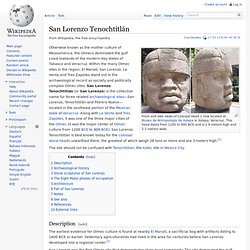
This head dates from 1200 to 900 BCE and is 2.9 meters high and 2.1 meters wide. Olmec. Olmec jadeite mask 1000–600 BCE The Olmec were the first 'major' civilization in Mexico following a progressive development in Soconusco.[1] They lived in the tropical lowlands of south-central Mexico, in the present-day states of Veracruz and Tabasco.
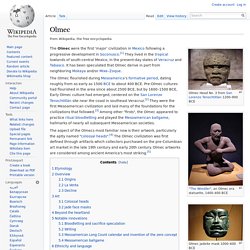
It has been speculated that Olmec derive in part from neighboring Mokaya and/or Mixe–Zoque. The Olmec flourished during Mesoamerica's formative period, dating roughly from as early as 1500 BCE to about 400 BCE. Ancient Pueblo Peoples. Ancient Native American culture in Four Corners region of the US The Ancestral Puebloans, also known as the Anasazi, were an ancient Native American culture that spanned the present-day Four Corners region of the United States, comprising southeastern Utah, northeastern Arizona, northwestern New Mexico, and southwestern Colorado.[1] The people and their archaeological culture are often referred to as "Anasazi".
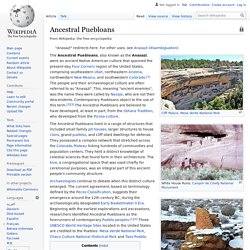
This, meaning "ancient enemies", was the name they were called by Navajo, who are not their descendents. Contemporary Puebloans object to the use of this term.[2][3] The Ancestral Puebloans are believed to have developed, at least in part, from the Oshara Tradition, who developed from the Picosa culture. The Ancestral Puebloans lived in a range of structures that included small family pit houses, larger structures to house clans, grand pueblos, and cliff-sited dwellings for defense. Archaeologists continue to debate when this distinct culture emerged. Etymology Geography History. Hatunrumiyoc - Twelve-Angle Stone, Cusco 24 Insider Tips, Photos and Reviews. One of the things we both looked forward to seeing was the famous Inca Wall and it was even more amazinf than we had imagined.
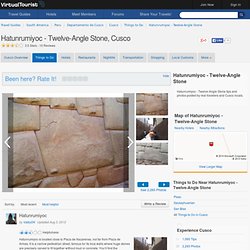
Living on stolen time. Located high on the hill overlooking the city of Cusco, Saksaywaman (pronounced very similarly to ‘sexy woman’) was an Incan fortress, vital to the protection and control of the city.
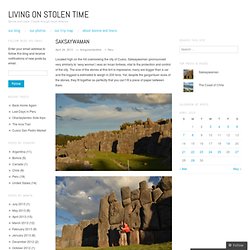
The size of the stones at this fort is impressive, many are bigger than a car and the biggest is estimated to weigh in 200 tons. Yet, despite the gargantuan sizes of the stones, they fit together so perfectly that you can’t fit a piece of paper between them. With immense terrace walls and enormous stones, it is evident that Saksaywaman was built to demonstrate an image of strength. Poverty Point - What is Poverty Point. Definition: Poverty Point is a large, C-shaped, 3,500-year-old earthwork located on the Maçon Ridge in the Mississippi River trench, in the northeastern part of the American state of Louisiana. The site consists of a semicircular or perhaps semi-octagonal series of five or perhaps six concentric rings or ridges, cut by three or perhaps four radial avenues or aisles. These ridges circle around an artificially raised plaza, and there are five additional mounds, within an area of approximately seven square kilometers (about 17 acres).
The site's original configuration has been a topic of debate for the past fifty years or more, partly due to the erosive forces of the adjacent Bayou Macon. No doubt about this, though: Poverty Point was built and occupied by Archaic period hunter-gatherers between 1750 and 979 calibrated years BC (cal BC), and as such it is one of the oldest mound complexes in North America. Archaic period in North America. Saksaywaman. Sideways view of the walls of Saksaywaman showing the details of the stonework and the angle of the walls. The site, at an altitude of 3,701 m, was added as part of the city of Cusco to the UNESCO World Heritage List in 1983. Description[edit] Located on a steep hill that overlooks the city, it contains an impressive view of the valley to the southeast.
Surface collections of pottery at Saksaywaman indicate that the earliest occupation of the hill top dates back at least a millennium. [citation needed] Because of its location high above Cusco and its immense terrace walls, this area of Saksaywaman is frequently referred to as a fortress.[5] The importance of its military functions was highlighted in 1536 when Manco Inca lay siege to Cusco.[6] Much of the fighting occurred in and around Saksaywaman as it was critical for maintaining control over the city. The best-known zone of Saksaywaman includes its great plaza and its adjacent three massive terrace walls. Modern-day use[edit] Incas. From their capital, Cuzco, in the central Peruvian Andes, the Inca created a huge empire reaching over 2,400 miles along the length of the Andes.
The supreme head of state was the king, considered a living god ruling by divine right and the royal family controlled important areas of government such as the army. The empire’s economy was based on taxed labour. People contributed part of their labour to the state and the state-controlled religion. People farmed and herded animals, worked in mines and produced specialised goods such as clothing and pottery. The surplus was stored in numerous warehouses (tambos) for use by the army and state labourers. Inca colonists were settled in newly conquered territories as a way of managing subject peoples and spreading Inca language and customs. Inca engineers and labourers built a network of thousands of miles of roads and bridges to connect the empire.
A Walk Through Machu Picchu p1. Aztecs (Mexica) During the twelfth century AD the Mexica were a small and obscure tribe searching for a new homeland.